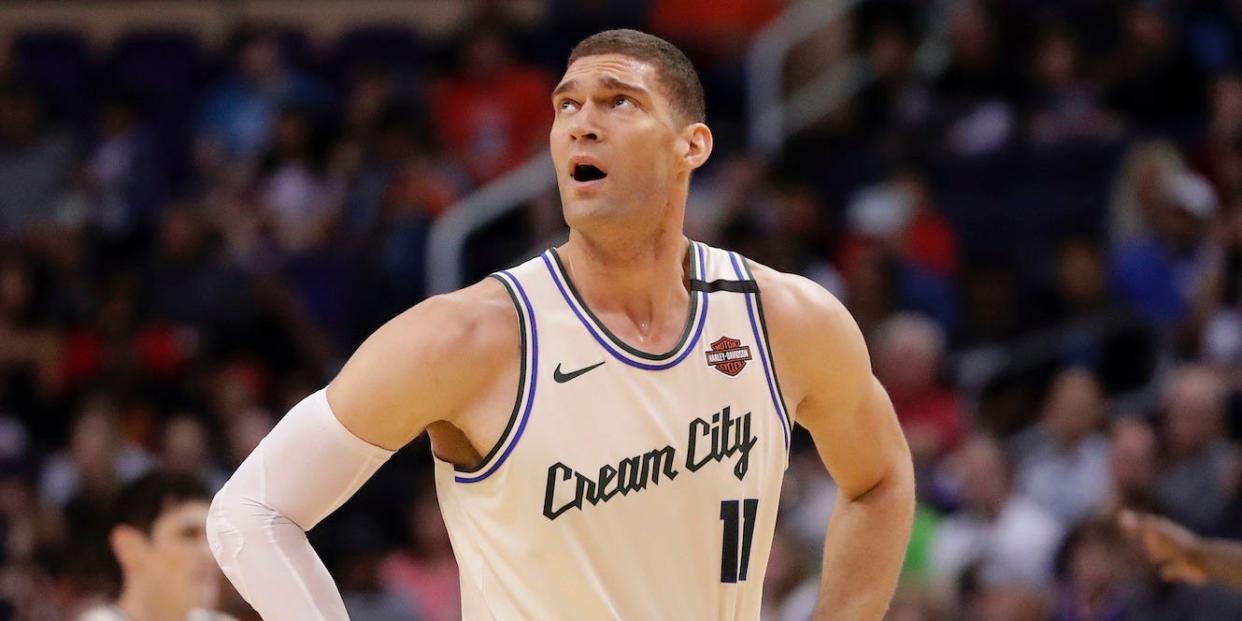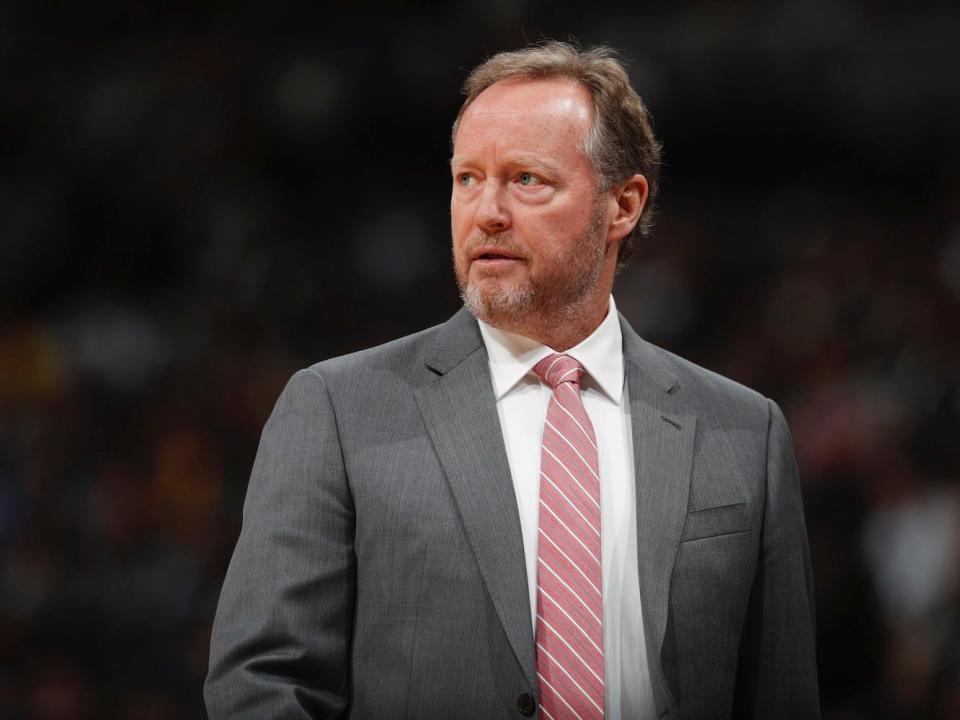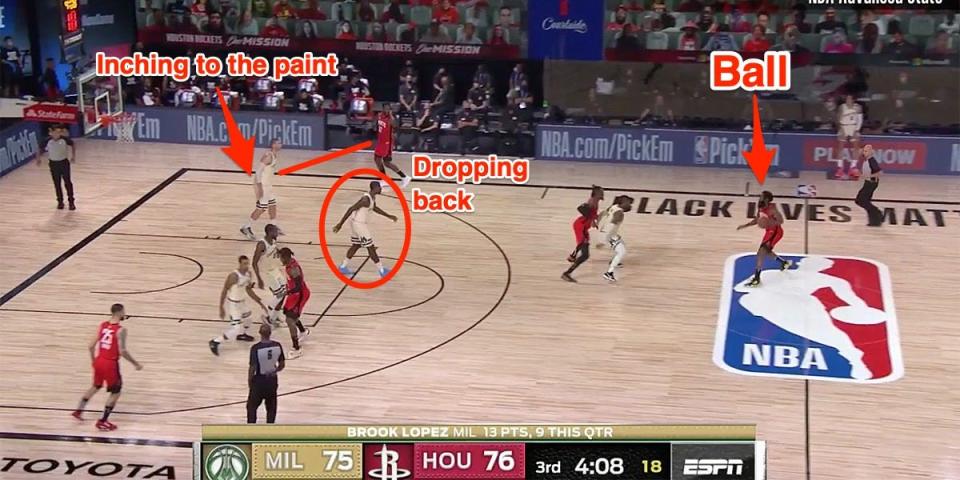The Rockets exposed the Bucks' biggest flaw in what could be a worrying sign for the playoffs

Matt York/AP Images
The Houston Rockets beat the Milwaukee Bucks on Sunday, 120-116.
The Rockets shot an NBA record 61 threes on Sunday and won, despite making just 34% of those attempts.
The Bucks are the NBA's best defense, but they grant a high number of three-pointers in an effort to protect the rim.
The Bucks have been burned by the three-pointer before, and Sunday's game raises concerns about their strategy and whether it will hold up in the playoffs.
The Houston Rockets got one of the biggest wins in the NBA bubble, beating the Milwaukee Bucks, 120-116, on Sunday.
Though the game was sloppy and riddled with fouls and turnovers — typical signs of teams warming up after a long layoff — there could be one important takeaway: the Rockets exposing the Bucks' three-point defense.
The Bucks didn't help themselves by turning the ball over 22 times and allowing 31 free throws, but they were hurt from the outside by the Rockets, who were happy to fire away from three. It may have been the big difference in this game.
The NBA's best defense is shaky when it comes to three-pointers
The Bucks are the NBA's best defense, with a defensive rating (points allowed per 100 possessions) of 101.8. Much of that is built around their elite rim protection — the Bucks have allowed opponents to shoot just 50.7% from six feet or closer. The second-best team, the Toronto Raptors, have allowed 57% shooting from that distance. The Bucks focus on taking away the easiest shots, to great success.
Their three-point defense comes at the expense of those efforts. Because Milwaukee packs the paint, it invites shooters to launch from the outside. It's not as if the Bucks simply allow threes —as Mike Prada wrote for SB Nation in December, Milwaukee attempts to take away corner threes (the easiest shots from behind the arc) and allows iffy shooters more space on "above the break" threes (the hardest, deepest shots). They still contest three-point shots.

David Zalubowski/AP Images
But while the Bucks allow opponents to shoot just 35.5% from deep, a solid number, they also grant 38.7 three-pointers per game, the most in the NBA. As a result, they also allow the most three-pointers made per game.
This strategy bit them in last year's Eastern Conference Finals against the Toronto Raptors. After losing the first two games of the series, Toronto started launching from deep.
Over the first two games, both Bucks wins, the Raptors averaged 12.5 made threes on 37 attempts per game (33.8%). Over the next four games, all Raptors wins, Toronto averaged 15.3 made threes on 39 attempts (39%). The series flipped, in part, because the Raptors got hot from the outside, and the Bucks didn't adjust.
The Bucks meet their stylistic match in the Rockets
The Rockets and Bucks have some similarities in their approaches. Both are built around dynamic offensive players in Giannis Antetokounmpo and James Harden, and they surround those stars with shooters to spread the floor and create more space. They focus their offenses on shots at the basket and three-pointers, the two most efficient field goals in basketball.
So, these two teams present an interesting strategic battle when they face off: they both hunt the same shots and largely try to deny their preferred shots on the other end.
On Sunday, the Rockets hit 21-of-61 shots from three-point range. While 34.4% shooting isn't ideal, the sheer volume made a difference, particularly with the Rockets shooting just 39% from the field overall. The 61 attempts were tied for the most in any non-overtime game in NBA history.
When the Rockets got dribble penetration, the Bucks collapsed, and Houston let it fly from deep.
The Bucks' defensive strategy can be seen below. In the first photo, Brook Lopez is playing off of Jeff Green (32) and not bothering to jump out on Ben McLemore (16), who was freed by Green's screen. Lopez was instead waiting to shut down Russell Westbrook's drive into the paint.

via ESPN/NBA
On another possession, Marvin Williams was dropping back into the paint, anticipating a drive from James Harden, rather than playing up to contest a pull-up three-pointer. Brook Lopez was already inching off Green on the right wing, ready to defend the paint.

via ESPN/NBA
The Bucks could have lost by more, too, as they granted the Rockets several open looks that Houston didn't convert.
The Bucks ceded 26 corner-three attempts to the Rockets on Sunday, likely more than they would prefer. The Bucks typically allow 20 corner threes per game.
To be clear, the Bucks defense works. It's the best in the league, and at one point, it was on a historic pace. Some of Sunday's performance could be chalked up to rust and poor execution.
"We had a couple turnovers," Bucks coach Mike Budenholzer said after the game. "At the end of the day, that's really what killed us. Turnovers, lack of execution down the stretch."
While the Bucks could argue that with fewer turnovers, they would have outscored the Rockets, the Rockets could rightly argue that on an average shooting night, they would have scored even more points.
Budenholzer was criticized in last year's playoffs for not adjusting when the Bucks defense was collapsing. The question has lingered over the Bucks all season: will they stick to their game plan, or change things if it goes awry?
Brook Lopez might have offered an answer earlier in the season.
"If there's an individual who gets hot, we may adjust to him, we may change up our coverage," Brook Lopez said. "But we try to be who we are at the defensive end. Our identity is who we are. That's why we've been so good and able to repeat our success."
Read more:
Read the original article on Insider

